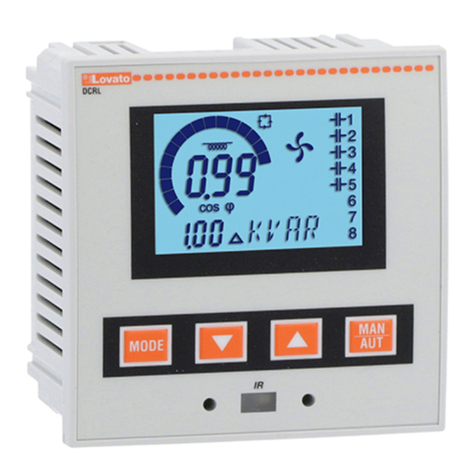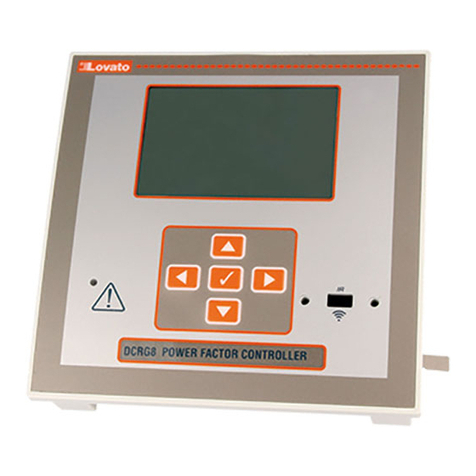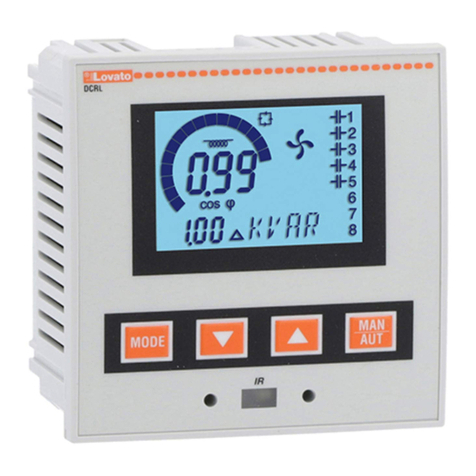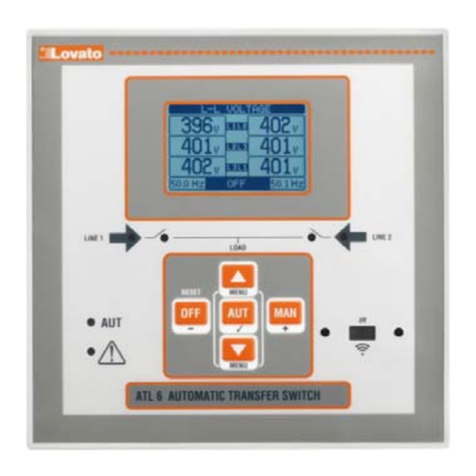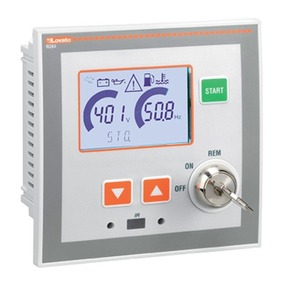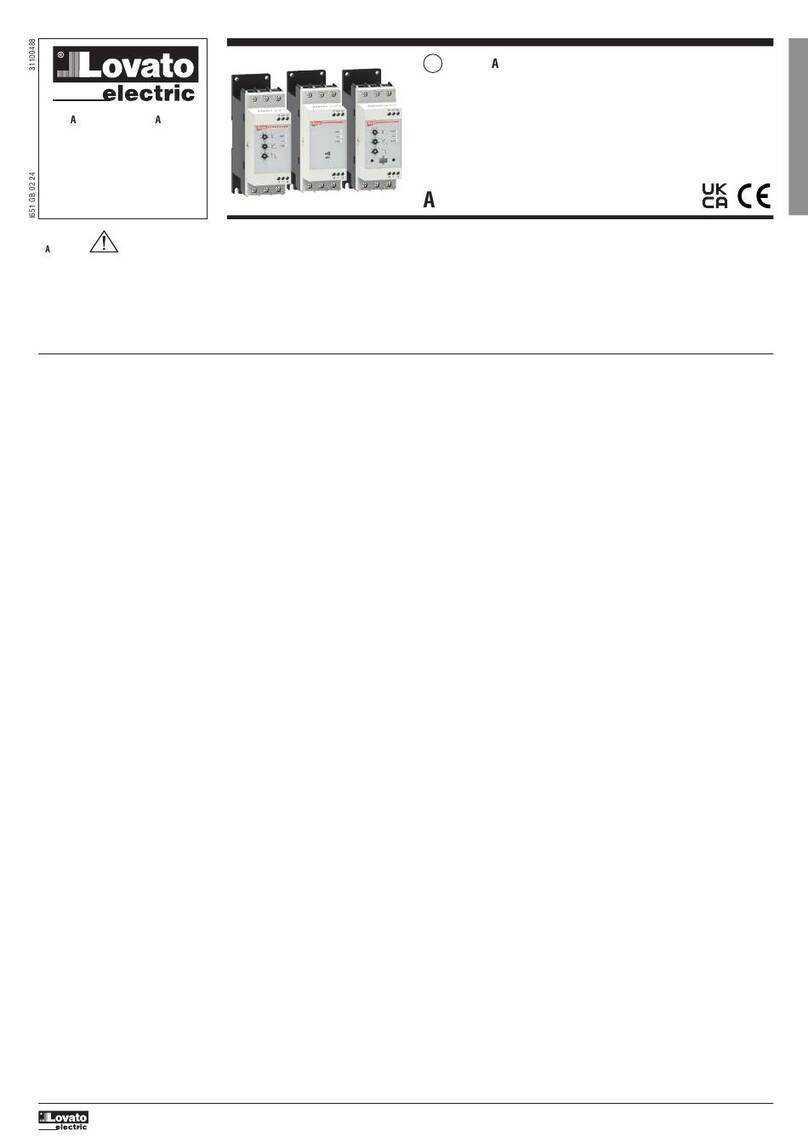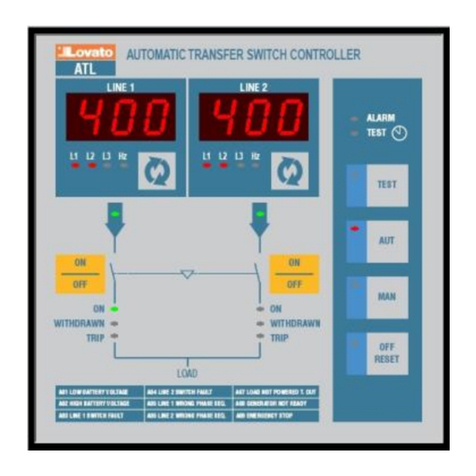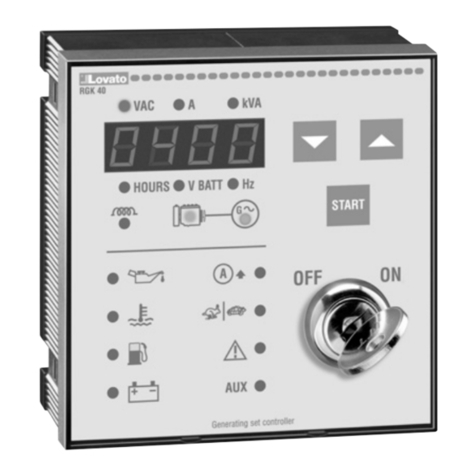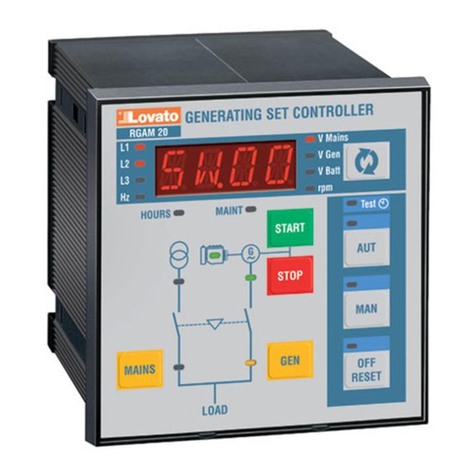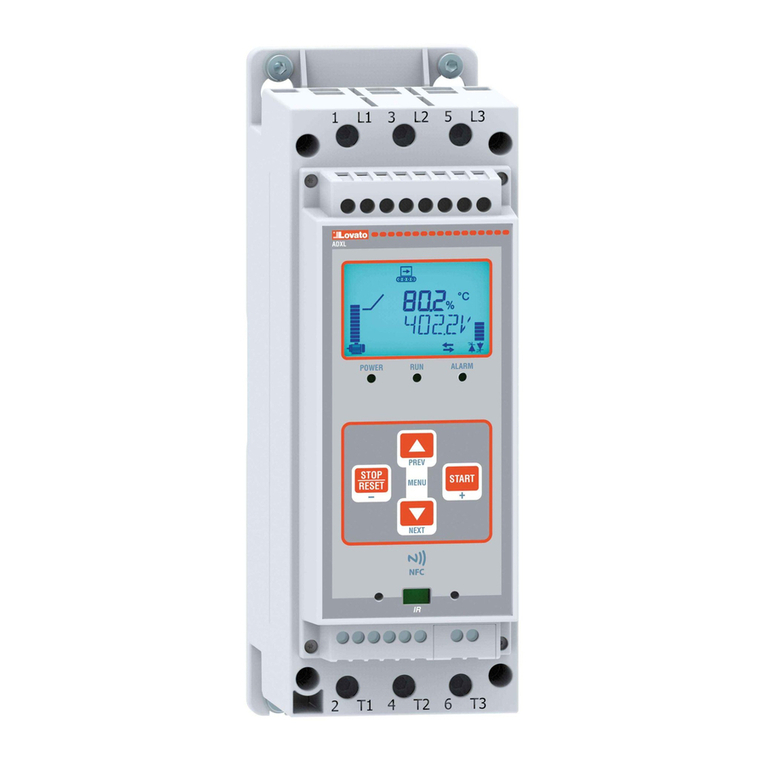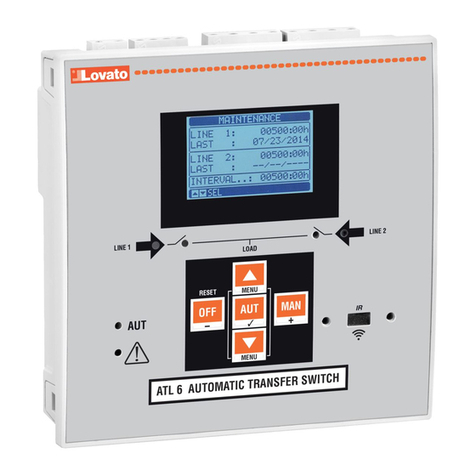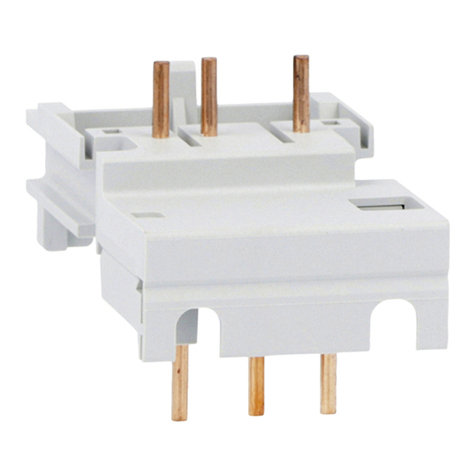
Doc: MHIT101A0309.doc 21/01/2010 p. 7 / 22
CONTROLLI DI TENSIONE
•Tutte le condizioni che servono a stabilire se una
sorgente di alimentazione è idonea o meno vengono
definite dall’utente attraverso il menu P1 (dati
nominali) e i menu P3 e P4 (rispettivamente limiti di
tensione linea 1 e linea 2)
•Tramite il menu P1 si possono impostare i dati
nominali dell’impianto, quali tensione e frequenza
nominali, che verranno utilizzati come riferimento per
la impostazione delle soglie percentuali
•E’ possibile impostare un rapporto di trasformazione
TV nel caso agli ingressi di tensione dell’apparecchio
venga applicata una tensione più bassa rispetto a
quella effettiva dell’impianto. Anche in questo caso sia
la visualizzazione che la impostazione delle soglie
saranno effettuate in grandezze reali riferite
all’impianto
•La centralina può essere programmata per effettuare i
controlli di tensione su reti trifasi con o senza neutro,
bifasi o monofasi (P1.03)
•Nel caso di reti trifasi o bifasi, si può scegliere se
monitorare le tensioni concatenate, le tensioni di fase
oppure entrambe (P1.04). in ogni caso la tensione
nominale impostata con P1.01 deve essere sempre
riferita alla tensione concatenata
•Nella seguente tabella sono elencati i controlli che
vengono effettuati su ciascuna linea. Quelli indicati
con OFF possono essere esclusi
•Ciascuna delle anomalie ha un tempo di ritardo
indipendente. L’anomalia deve durare
consecutivamente più del tempo specificato per
invalidare il segnale di presenza tensione
•Quando tutti i parametri della linea rientrano all’interno
dei limiti specificati, prima che la stessa possa essere
considerata utilizzabile, deve trascorrere il tempo di
ritardo presenza linea. La durata di questo tempo è
specificata con due parametri indipendenti, uno che
definisce il tempo di ritardo quando la linea alternativa
è disponibile ed un altro che definisce il ritardo, di
solito più corto, quando la linea alternativa non è
disponibile
•Tutti i controlli eccetto quello di minima tensione
possono essere esclusi indipendentemente,
impostando il relativo parametro su OFF
•I limiti di minima e di massima tensione sono
specificati con l’impostazione di due soglie ciascuno,
una che definisce il punto oltre il quale la tensione
viene considerata non più accettabile (es. P3.01, drop-
out) ed un altra, più vicina alla tensione nominale, che
definisce il punto in cui ritorna ad essere compatibile
(es. P3.02, pick-up). La distanza fra queste due soglie
definisce l’isteresi. Ad esempio si potrebbe definire
che sotto l’80% della nominale la tensione sia non
piu’ utilizzabile e che per essere considerata buona
debba risalire sopra l’85%, definendo così una isteresi
(dead-band) del 5%. Lo stesso concetto si applica per
la tensione massima
•Per le soglie di frequenza esiste una isteresi fissa pari
all’1% della frequenza nominale
•Per la soglia mancanza fase, il ripristino si ha quando
la tensione risale oltre la soglia di ripristino tensione
minima.
VOLTAGE CONTROLS
•All the conditions which can help establish whether a
power source is or is not suitable are defined by the
user through menu P1 (ratings) and menus P3 and P4
(line 1 and line 2 voltage limits, respectively)
•The system ratings can be set through menu P1,
including rated voltage and frequency, which will be
used as reference to set percent thresholds
•A voltage ratio (VT ) can be set whenever a voltage
lower than the actual system voltage is applied to the
unit voltage inputs. Also in this case, both the
visualization and the setting of thresholds will be
implemented in actual magnitudes referred to the
system
•The controller can be programmed to perform voltage
controls on three-phase with or without neutral, two-
phase or single-phase utilities (P1.03)
•In the case of three-phase or two-phase utility, you
can choose whether to monitor L-L voltage, L-N
voltage, or both (P1.04) . In every case, the rated
voltage set with P1.01 has to be equal to the phase-to-
phase voltage.
•The following table lists the controls made on each
line. The ones marked with OFF may be excluded
Control Description OFF
Minimum voltage One or more phases too low
Maximum voltage One or more phases too high z
Phase loss Threshold below which the unit
intervention is quicker than with
a normal decrease.
z
Asymmetry
(unbalance)
Phases within the Maximum-
Minimum range but too
different from each other
z
Minimum frequency Too low frequency z
Maximum frequency
Too high frequency z
Phase sequence Reverse rotation of phases z
•Each anomaly has an independent delay time. The
anomaly must last uninterruptedly more than the time
specified to invalidate the voltage presence signal
•When all the line parameters are restored within the
specified limits, before the line may be used, the line
presence delay time must elapse. The duration of this time
is specified by two independent parameters, one defining
the delay time when the alternate line is available, and a
second one, normally shorter, that defines the delay in
case of the alternate line is not available
•All controls, except minimum voltage, may be excluded
independently, by setting the relevant parameters to OFF
•The limits of minimum and maximum voltage are specified
by setting two thresholds each, one defining the point
beyond which voltage is considered no longer acceptable
(e.g. P3.01, drop-out) and the other, nearer to the rated
voltage, defining the point where it is again compatible (e.g.
P3.02, pick-up). The distance between these two
thresholds defines hysteresis. For instance, it can be stated
that below 80% of the rated value, voltage can no longer
be used and that, to be deemed satisfactory, it must rise
again above 85%, thus defining a 5% hysteresis (dead-
band). The same principle is applied to maximum voltage
•As concerns frequency thresholds, there is a fixed
hysteresis equal to 1% of rated frequency
•For the phase loss, the pick-up threshold is the same as
the minimum voltage pick-up threshold.
Controllo Descrizione OFF
Minima tensione Una o più fasi troppo basse
Massima tensione Una o più fasi troppo alte z
Mancanza fase Soglia sotto la quale
l’apparecchio interviene più
rapidamente rispetto ad un
normale abbassamento.
z
Asimmetria
(sbilanciamento)
Fasi comprese nell’intervallo
Massima-Minima ma troppo
differenti fra loro
z
Minima frequenza Frequenza troppo bassa z
Massima frequenza Frequenza troppo alta z
Sequenza fasi Rotazione delle fasi inversa z
